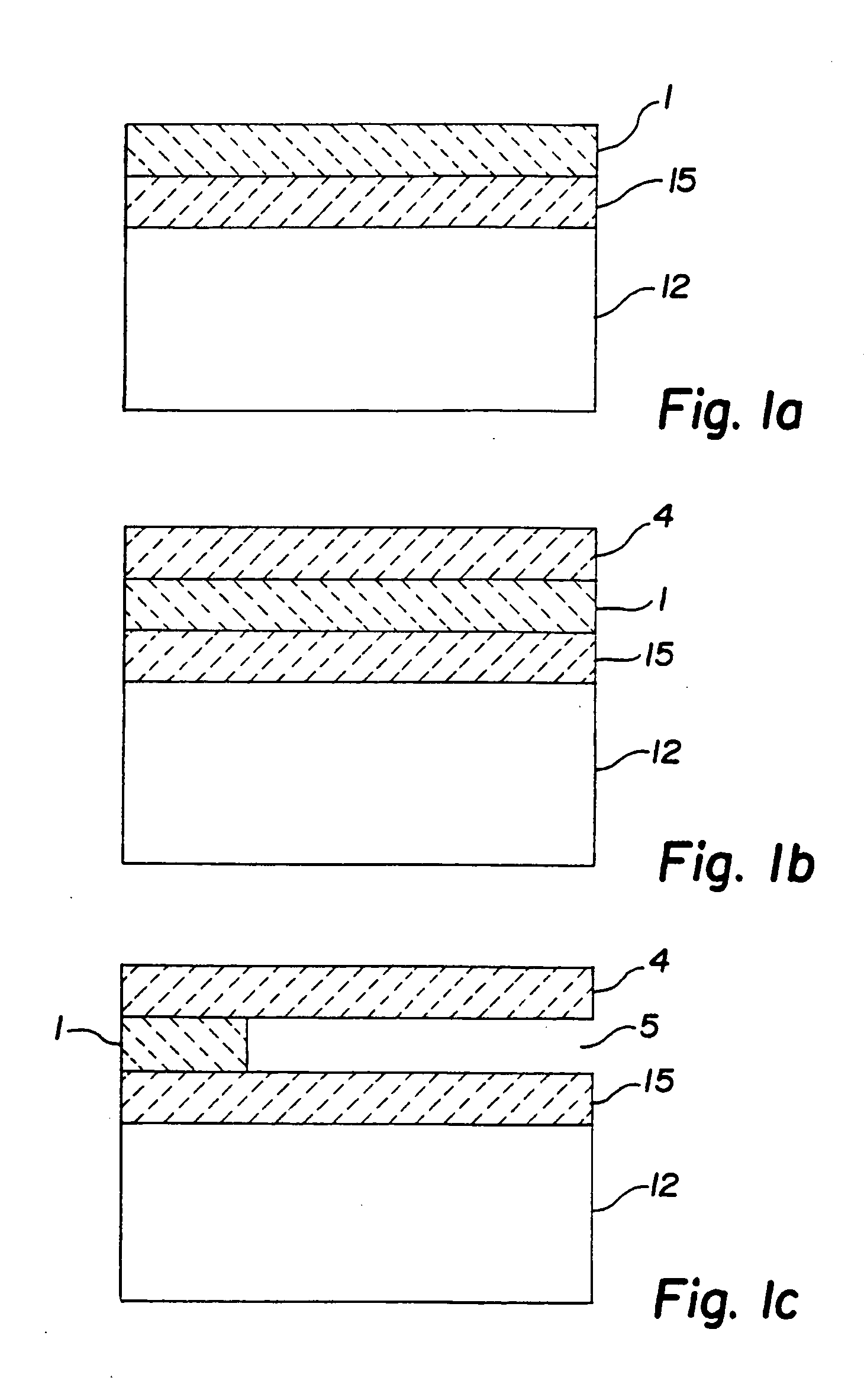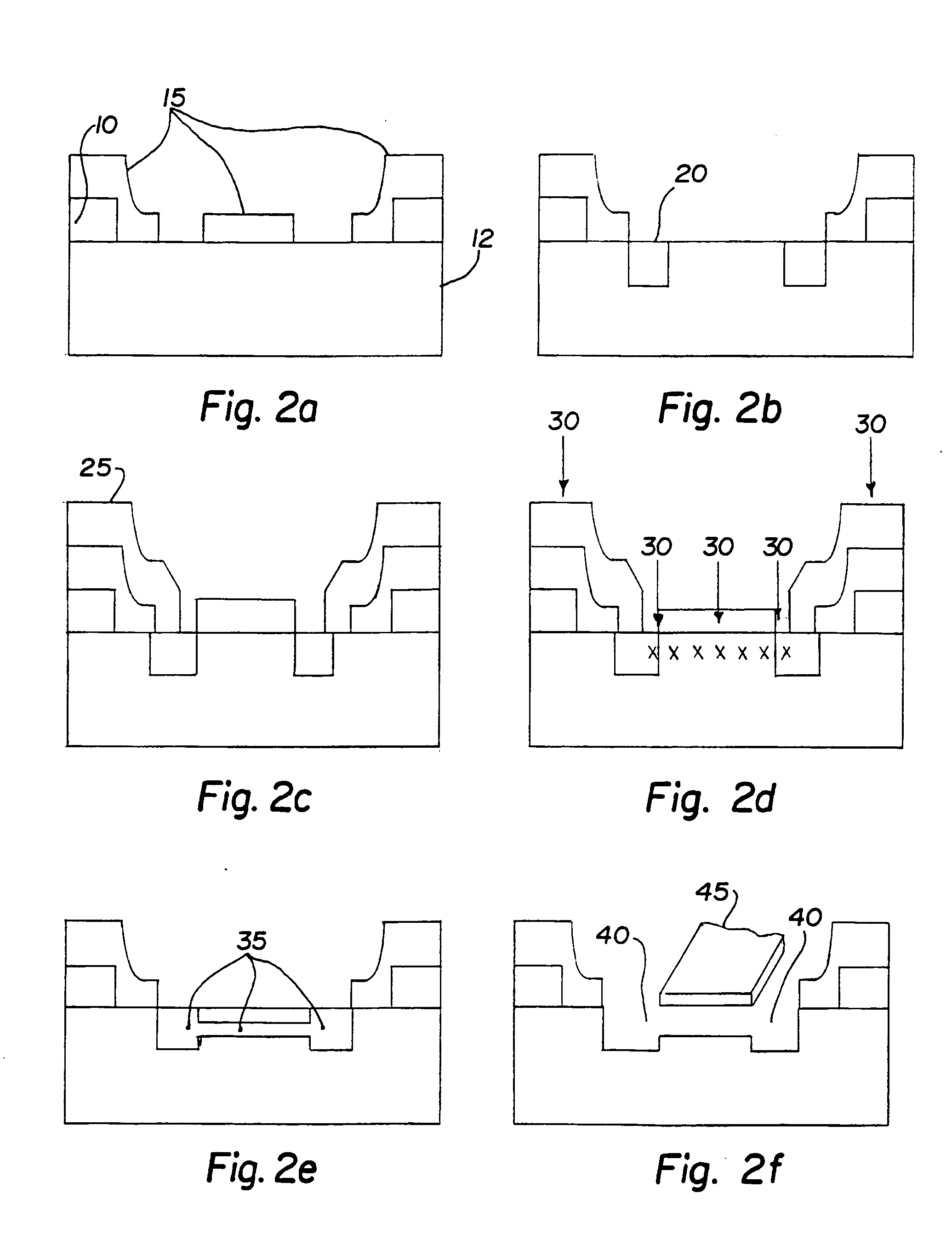Fabrication of diaphragms and "floating" regions of single crystal semiconductor for MEMS devices
a technology of semiconductors and diaphragms, applied in the field of microelectromechanical structures, or mems, can solve the problems of low strength of polysilicon and its resistance to crack formation and associated mechanical failure, and achieve the effect of accurate and simple techniqu
- Summary
- Abstract
- Description
- Claims
- Application Information
AI Technical Summary
Benefits of technology
Problems solved by technology
Method used
Image
Examples
Embodiment Construction
[0029]FIG. 2, to which reference should now be made, illustrates a representation of the sequence of steps used to manufacture microelectromechanical (MEMS) devices with a process that allows the formation of floating or cantilevered single crystal structures instead of the polysilicon structures used in the prior art.
[0030] In FIG. 2a, an etch stop layer 15 such as silicon nitride is deposited over existing structures 11 using a vapor deposition process typically in the temperature range of 800° C.-900° C., and then masked and etched, leaving the nitride in direct contact with the surface of a single crystalline substrate at the boundaries of all regions that will not become floating structures, leaving regions that will become floating structures in between
[0031] In FIG. 2b, using a thermal oxidation furnace in a temperature range of 800° C.-1250° C., perform a local oxidation of silicon (LOCOS) process sequence after a trench etch step. This process sequence can include any of ...
PUM
 Login to View More
Login to View More Abstract
Description
Claims
Application Information
 Login to View More
Login to View More - R&D
- Intellectual Property
- Life Sciences
- Materials
- Tech Scout
- Unparalleled Data Quality
- Higher Quality Content
- 60% Fewer Hallucinations
Browse by: Latest US Patents, China's latest patents, Technical Efficacy Thesaurus, Application Domain, Technology Topic, Popular Technical Reports.
© 2025 PatSnap. All rights reserved.Legal|Privacy policy|Modern Slavery Act Transparency Statement|Sitemap|About US| Contact US: help@patsnap.com



